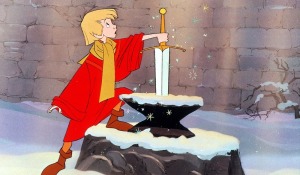This as you can see right here, is the iconic Johnnie Walker Blue Label, the 4.5L cannon version. However, what we tried today isn’t current. This version of the JW Blue is quite old, but it is still very, very good. The JW Blue Label is the premium, top-of-the-line offering by Johnnie Walker, however it is a NAS. (No age statement)
A little bit about NAS. Quite controversial as traditionally, scotch is sold according to how old is. Example being the 12, 15, 18 and 21. But, that does not mean all NAS whiskies are bad. NAS whiskies allows the master blender more freedom to achieve consistency and quality in order to get the same product every single time a la Johnnie Walker Blue Label. Sometimes, it can be even better than the equivalent 12 or 15. (Hakushu Master Distiller’s Edition is better than 12, my personal opinion) . However, do be cautious as nowadays many distilleries are churning out NAS whiskies to sell more as they do not have stock to keep up with the demand of their traditional age statement whiskies thus not all are as great and consistent as the venerable Blue Label.
Johnnie Walker claims their Blue Label is the smoothest blended whisky ever made. Using a recipe dating back to the 19th Century and utilizing rare casks from distilleries, current and past (only 1 in 10000 casks makes the cut). We should find out if it really is the legend of a whisky (blended).
Credits to my friend, Benedict who supplied this bottle while at his place. Do admire the collection behind this bottle, for there are numerous cognacs and whiskies which I will hopefully get to drink someday. Sigh, my first world problems.
Now, to the tasting!
Appearance: Golden amber liquid. Oily, thick and viscous. Coats the glass thoroughly.
Nose: Huge initial burst of vanilla, oak and some smoke. Creamy and Buttery. Wild Floral Honey and Orange Marmalade. A final touch of smokey peat and it ends.
Mouth: Smooth. Very smooth. I can imagine why people would down this willingly in the club. Can I fault it for being too smooth? Honey followed by light floral undertones, and a slight sherried sweetness. A touch of chewy toffee and raisins. Eases subtlety to reveal an enjoyable smoke and peat background. Conceived with balance and executed perfectly.
TL:DR, A really really smooth and very enjoyable whisky. The focus of it is still on the smoothness and drink-ability. Not the complexity or layers of flavors, but it has enough to keep you more than satisfied. A 85/100 because of how it is simply enjoyable. No fuss at all. Price-wise, you’ll have to decide for yourself, a decent 1.0L bottle goes for $237 in Changi DFS.
Cheers!







